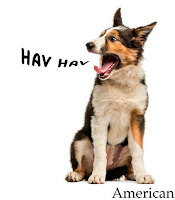The day you buy your dog, it brings the responsibility and commitment to meet the needs of that dog. Ensuring that your dog stops barking, and making sure you get help if your dog has a behavior problem associated with the bark.
You do this by calling a dog whisperer, dog behaviorist or dog trainer. This will guide you in finding a suitable solution for you and your dog, taking into account the opportunities that are available.
Yes, yes, I hear you, you do not have to tell me, "Grandpa, stop complaining" ... so I'll give you an extra tip. A tip from the secret box of a dog whisperer.
As a dog whisperer it is not always easy to find a solution that takes into account the character of the dog. And yet I feel this is just the challenge that makes my job so exciting.
 |
| Get Help |
Moreover, the curiosity always excites in me when I get called.
Therefore, a secret trick you can give you back the pride of owning a your pup.
Just one example, and no, no more stories that could have possibly happened. This really happened and I am proud that I was able to solve it so plain and simple.
You may have already read on the website that Jenn came to us from Spain. Well, Jenn was completely down. She had totally lost confidence. So every wrong action, how can I explain it ... could mean the end of the sparkle of the bond we were creating.
My girlfriend and I have a habit of sometimes going out. Yes, who does not. But every time we got home, Jenn was barking at the door.
Okay, admittedly, handy if there are intruders, but less useful for the neighbors.
Knowing Right, the moment when I take control of this situation and I learn Jenn clearly, precisely and exactly the behavior I expected from her.
Hmm, sounds familiar, not?
 |
| Ask A pro |
Here it comes, the secret ... The secret that I myself have experienced training with INTERNATIONAL MAJOR TOP TRAINERS that compete every year at Crufts for obedience, agility and doggy-dance walk, but also manage to win every year and this already for more than a decade.
It took me exactly one week to stop Jenn barking. And I know you'll read the following paragraphs, perhaps a few times because it lies in the details of the technique. But you asked me to give tips and this is a tip where I as a dog whisperer earn money. And believe me, it comes to sensitively, precisely orchestrated solutions, I am worth more than every penny.
For this solution, you'll need 4 things: sweets (to maintain the focus of the dog, no, not as a reward - perhaps in a later article for details), a toy that your dog loves it (Jenn + ball = love) perseverance and a lot of patience.
I learned Jenn barking on command. In other words, I say, "barking" and Jenn barks. If she does that properly, I give her a piece of candy. So, she knows that her focus is correct. After a number of times practicing properly, Jenn gets her reward. We play with the bal.This took five days.Then I was sure I could say always and everywhere, "barking" and Jenn started barking.
Knowing Right, Jenn now know in what situation she's expected to barking. First part success.
Now, just unlearn when no longer to bark. And this I have done on a quiet weekday ... I came home in the car, went to the front door ... and Jenn started barking.
She continues to bark when I came in. I waited patiently without making eye contact, even without giving her any attention until she stopped barking.
At the time she relaxes completely, I give her the command "bark", Jenn barks, I give the candy. This command I repeat two times. After that I played with her as a reward.
Now I go out, drove the same car away, came back and repeated the scenario ... Jenn barks relaxes command, sweet, command, sweet, command, sweet, just play ...
So I drove away 12 times, so I came back 12 times ...
Only the 12e time Jenn barked NO MORE. She was already relaxed when I came through the door. I gave the command, sweet, command, sweet, command, sweet, just play ...
 |
| Ask a pro |
Ha, ha, won. Of course I can talk about this solution for a long time with many veterinarians and dog behavior psychologists ... It works, period (and I know why it works). And the solution comes from international dog trainers, competing all over the world.
There are incredible and amazing dog-secrets only known by actual dog whisperers because they for decades they intensively and passionately work every day work with dogs, discovering by chance secrets. And these secrets they just give to the next generation of top trainers and dog whisperers.
And that's why it pays to turn to a dog whisperer to find Knowing Right-solutions for barking dogs.
Have confidence, create a powerful bond with your dog
Bryan
PS If you still want more information about North Vancouver Knowing Right Dog Psychology Center, click here.






















































